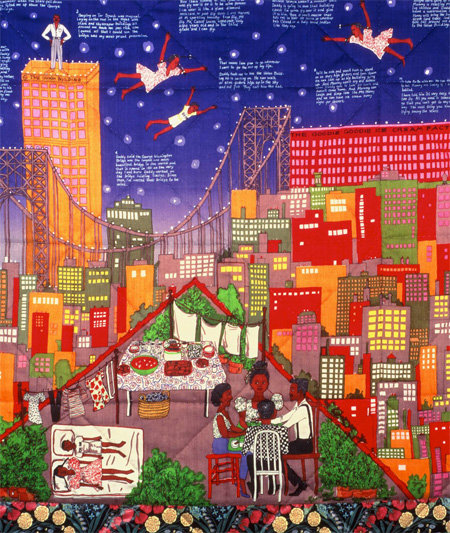Walls of prejudice
Walls of prejudice
Posted June. 04, 2020 07:45,
Updated June. 04, 2020 07:45

Quilts have been traditionally known as handcraft done by women. American artist Faith Ringgold is known for her works in paintings, sculpture and performance, but best know for her works of combining quilt with paintings. The story-like images reflected on her quilt works are known as “story quilts.”
“Tar Beach” is a story quilt that describes the home in Harlem, New York where Cassie, an eight-year-old African American girl lives. On a hot, humid summer night in 1939, Cassie’s family has a small party on the roof of her house. Cassie and her brother fall asleep, dreaming of flying the night skies while the adults have a good time partying. The abundant food on the table, the neatly arranged, clean laundry, the roof lined with plants, the happy, carefree family depicted is contrary to Harlem’s image as a rundown and underprivileged neighborhood. Cassie’s family depicts the artist’s own family. Ringgold grew up with abundant support and love from her family and pursued higher education at college, which was uncommon for an African women during the times. She grew aware of racial and gender equality issues after experiencing discrimination in the male-dominated artist community. Ringgold opted for quilt instead of traditional Western art because of her awareness as African American. Her grandmother had been an African-American slave making quilts at a farm run by whites, and her mother designed clothes in Harlem for African-American customers. The artist chose quilt, which had been downgraded as a cheap handcraft after industrialization, to enhance the artwork as a sophisticated segment and bring racial and gender discrimination issues to attention.
The high buildings depicted in the quilt seem to symbolize walls of prejudice. Perhaps the artist strives to tell the story of hopes and dreams of the weak to overcome the walls of discrimination and prejudice.







